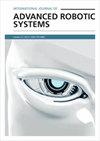控制系统预测模型的神经常微分灰色算法
IF 2.1
4区 计算机科学
Q2 Computer Science
International Journal of Advanced Robotic Systems
Pub Date : 2023-07-01
DOI:10.1177/17298806231171244
引用次数: 0
摘要
由于灰色模型预测小样本时间序列的可行性,灰色理论自提出以来就得到了很好的研究,目前正以预测小样本的重要方式发展。本文在神经常微分方程的基础上提出了一种新的灰色预测准则,称为神经常微分灰色模式。这种神经常微分灰色模式允许通过包含新白化方程的训练过程来学习预测模型。与其他模型相比,需要根据实际样本的规律预先准备结构和时间序列,因此这种神经常微分灰色模型既可以提供全面的应用,也可以学习不同数据样本的特性。为了获得一个更好的、具有较高预测效率的模型,随后,本研究使用Runge–Kutta方法,通过神经常微分灰色模式对模型进行训练,以获得预测序列并对模型进行求解。该控制器为适应新型车轮奠定了有利的理论基础,全面拓展了机械弹性车轮的利用范围。本文章由计算机程序翻译,如有差异,请以英文原文为准。
Neural ordinary differential gray algorithm to forecasting models of controlled systems
Due to the feasibility of the gray model for predicting time series with small samples, the gray theory is well investigated since it is presented and is currently evolved in an important manner for forecasting small samples. This study proposes a new gray prediction criterion based on the neural ordinary differential equation, which is named the neural ordinary differential gray mode. This neural ordinary differential gray mode permits the forecasting model to be learned by a training process which contains a new whitening equation. It is needed to prepare the structure and time series, compared with other models, according to the regularity of actual specimens in advance, therefore this model of neural ordinary differential gray mode can provide comprehensive applications as well as learning the properties of distinct data specimens. To acquire a better model which has highly predictive efficiency, afterward, this study trains the model by neural ordinary differential gray mode using the Runge–Kutta method to obtain the prediction sequence and solve the model. The controller establishes an advantageous theoretical foundation in adapting to novel wheels and comprehensively spreads the utilize extent of mechanical elastic vehicle wheel.
求助全文
通过发布文献求助,成功后即可免费获取论文全文。
去求助
来源期刊
CiteScore
6.50
自引率
0.00%
发文量
65
审稿时长
6 months
期刊介绍:
International Journal of Advanced Robotic Systems (IJARS) is a JCR ranked, peer-reviewed open access journal covering the full spectrum of robotics research. The journal is addressed to both practicing professionals and researchers in the field of robotics and its specialty areas. IJARS features fourteen topic areas each headed by a Topic Editor-in-Chief, integrating all aspects of research in robotics under the journal''s domain.

 求助内容:
求助内容: 应助结果提醒方式:
应助结果提醒方式:


